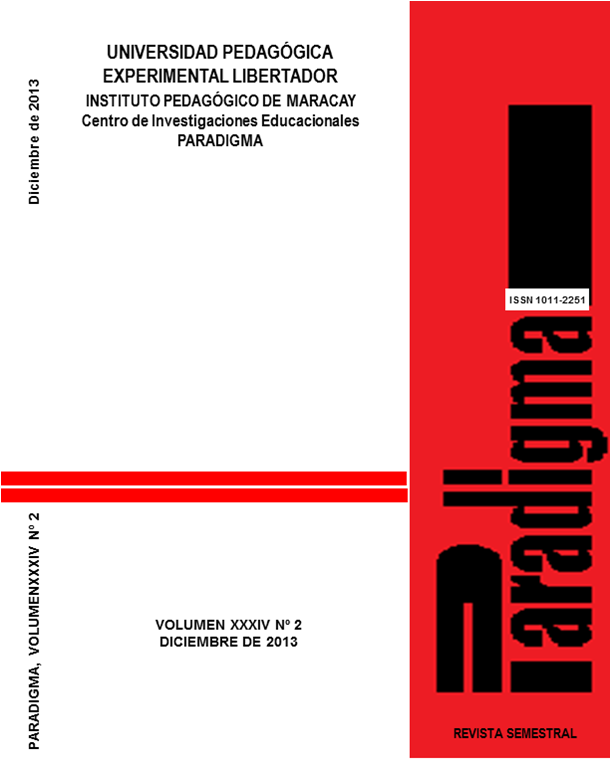PLANIFICACIÓN DE LA MATEMÁTICA ESCOLAR COMO ELEMENTO CLAVE EN LA FORMACIÓN DEL DOCENTE
DOI:
10.37618/PARADIGMA.1011-2251.2013.p177-200.id524Abstract
La principal competencia profesional que debe desarrollar el profesor de Matemática es la de ser capaz de realizar eficientemente la tarea de enseñar la disciplina. Para ello no es suficiente tener un conocimiento matemático a nivel superior, además requiere habilidades para planificar, gestionar y evaluar el contenido matemático. Este artículo se centra en algunos abordajes teóricos que plantean opciones para decidir qué enseñar sobre un tópico matemático y cómo enseñarlo, entre ellos el Mapa de Enseñanza-Aprendizaje –MEA- (Orellana, 2002), en cuya construcción se hace un análisis del contenido en términos de: fundamento matemático, vinculación intra y extra matemática, exploración gráfica y cálculo manual y con uso de tecnología, desarrollo histórico y generalizaciones; y el Análisis Didáctico (Gómez, 2002) centrado en cuatro análisis: de contenido, cognitivo, de instrucción y de actuación, como una conceptualización del modo en que el profesor debería diseñar, llevar a la práctica y evaluar actividades de aprendizaje de un tópico específico. Se describen experiencias de aplicación del MEA a un tema de Cálculo a nivel universitario y del Análisis Didáctico a contenidos de Estadística Descriptiva en educación media, que brindan respuestas satisfactorias a las interrogantes de qué y cómo enseñar un tema de matemática escolar. SCHOOL MATHEMATICS PLANNING AS A KEY ELEMENT INTEACHERS TRAININGABSTRACTThe main professional competence that math teacher must develop is to be able to efficiently perform the task of teaching the discipline. For this purpose, it is not enough to have a mathematical knowledge at higher level, in addition it is required some skills to plan, manage and evaluate the school mathematical content. This paper focuses on some theoretical approaches that raise options to decide, at the local level of planning, what to teach about a specific mathematical topic and how to teach it, among them: Teaching and Learning Map – MEA- (Orellana, 2002) whose construction is based on an analysis of the content in terms of: mathematics theory, intra and extra math relationship , graphical exploration and calculation, both, manual and using technology, history, and generalizations; and the Didactical Analysis (Gómez, 2002) focused on four different analysis: content, cognitive, instruction and performance, as a conceptualization of the way in which professor should design, implement and assess didactical units. Then we describe some experiences using a MEA over a topic of calculus at the university level and the application of didactical analysis to contents from descriptive statistics in secondary school, which provide satisfactory answers to the questions of “what and how to teach about a school mathematic subject”Key words: Teacher training, school mathematics planning and didactical analysisDownloads
Download data is not yet available.
Downloads
Métricas
Visualizações do artigo: 262 PDF (Español (España)) downloads: 53
How to Cite
León Gómez (UPEL-Maturín), N., Bara (UPEL-Maturín), M., & Azocar (Unidad Educativa Niño Jesús-Maturín), K. (2014). PLANIFICACIÓN DE LA MATEMÁTICA ESCOLAR COMO ELEMENTO CLAVE EN LA FORMACIÓN DEL DOCENTE. PARADIGMA, 34(2), 177–200. https://doi.org/10.37618/PARADIGMA.1011-2251.2013.p177-200.id524
Issue
Section
La Investigación en la UPEL


 English
English
 Español (España)
Español (España)
 Français (France)
Français (France)
 Português (Brasil)
Português (Brasil)




















































